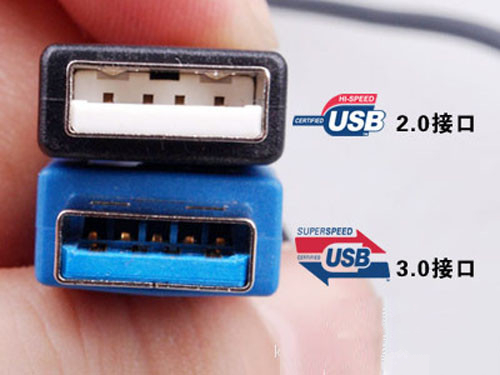Home >System Tutorial >Windows Series >Analysis of the differences between usb2.0 and 3.0
Analysis of the differences between usb2.0 and 3.0
- 王林forward
- 2024-01-03 14:35:473464browse
There are many types of usb that we often use. What is the difference between the common 2.0 and 3.0? Generally, the speed is different, and then the appearance is also different, and the USB socket pins are different. Today we brought Let’s take a look at the details below for an introduction to their different differences.

Introduction to the difference between usb2.0 and 3.0
1. The rate of USB3.0 is 5Gbps, while the rate of USB2.0 is 480Mbps.
2. From the appearance of USB, USB2.0 is usually white or black, while USB3.0 is changed to a "tall" blue interface.
3. From the perspective of USB socket pins, USB2.0 adopts a 4-pin design, while USB3.0 adopts a 9-pin design. In comparison, USB3.0 is more powerful.

There are three USB interfaces: USB1.1, USB2.0 and USB3.0
USB technology has experienced more than 20 years of development since 1993. The first generation of officially defined USB 1.0 was officially launched in 1996. It provides a low-speed transfer rate of 1.5MB/s for sub-channel keyboard and mouse, and a transfer rate of 12 MB/s in full-speed channel state. USB 2.0 came out in 2001, achieving a leapfrog development with a high-speed transfer rate of up to 480 MB/s. In 2010, USB 3.0 finally became available.
USB 3.0 is the third major version of the Universal Serial Bus (USB) standard for computer connections. Among other improvements, USB 3.0 also adds a new transfer mode called "SuperSpeed" (SS), which can achieve data transfer rates of up to 5 GB/s (625 MB/s), which is USB 2.0 480 MB/s (60 MB/s) more than ten times the high-speed mode.
In addition to the different connectors used on USB 3.0 cables, the various USB 3.0 connectors are also distinguished from the 2.0 version by the blue port or the capital letters SS on the plug.
A follow-up standard called USB 3.1 was launched in July 2013, offering transfer rates up to 10 GB/s (1.25 GB/s, called "SuperSpeed"), the same as Thunderbolt's first versions are evenly matched in terms of speed.
The transmission speed of USB1.1 can reach 12Mbps, while USB2.0 can reach a speed of 480Mbps, and is backward compatible with USB1.1.
As early as 1995, there were already personal computers with USB interfaces. However, due to the lack of software and hardware device support, the USB interfaces of these personal computers were idle and unused. After 1998, with Microsoft's built-in support module for the USB interface in Windows 98, and the increasing number of USB devices, the USB interface gradually entered the practical stage.

USB related issues
>>>win10usb cannot recognize the device
>>>usb often cannot be recognized What to do with the equipment
The above is the detailed content of Analysis of the differences between usb2.0 and 3.0. For more information, please follow other related articles on the PHP Chinese website!

